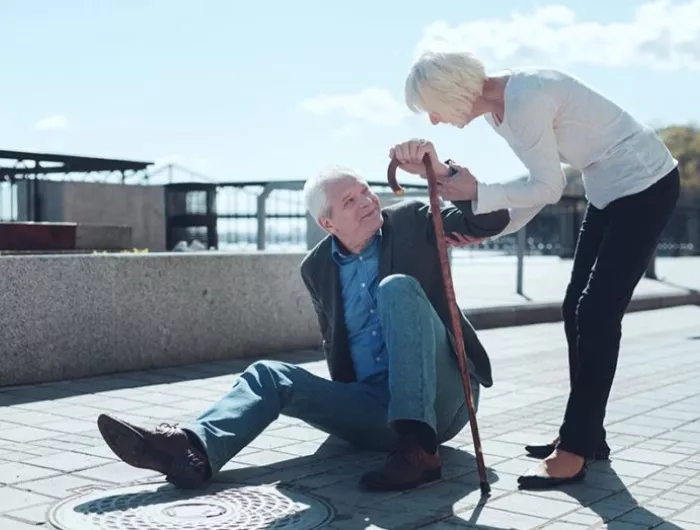How to fall better

zinkevych - stock.adobe.com.
Being physically active can reduce your risk of falling... and of getting a serious injury if you do fall.
“When you fall, you can sustain injuries like a hip fracture, a concussion, or musculoskeletal injuries like sprains and strains that keep you homebound,” says Kathleen Janz, professor of health and human physiology at the University of Iowa. “But people who are physically active are less likely to fall.”
Falls aren’t always avoidable
“If you have a winter like [our last] in Iowa, people slip and fall,” says Janz. “I fell about five times. But evidence shows that if you’re physically active and you do fall, you’re less likely to sustain a serious injury.”
One reason: stronger bones. “Maybe you fall, but you’re less likely to have a catastrophic injury like a hip fracture,” says Janz.
And active people have better muscles, she adds. “You’re actually better at falling. Your body can make subtle adjustments that minimize the damage when you hit the ground.”
Which exercises can prevent falls?
“Walking isn’t enough,” says Janz. Instead, aim for a mix of aerobic, strengthening, and balance exercises.
“Balance training could include Tai Chi, dancing, or even switching from walking forward to moving side to side,” explains Janz.
“And two or three types of exercise can be rolled into one event. You can dance, play tennis, take a Zumba class, or even play games with your grandkids at home or on playground equipment where you’re continuously shifting your body in relation to the environment.”
Outdoor activities have advantages, adds Janz.
“If you’re on a treadmill, you’re just doing the same thing repetitively. But hiking, where you’re going up and down and moving over uneven ground, is aerobic, it strengthens muscles, and it improves balance.”
The bottom line
The right mix of exercises can reduce your risk of falling…or getting badly hurt if you do fall.
Photo: zinkevych/stock.adobe.com
Tags
Topics

